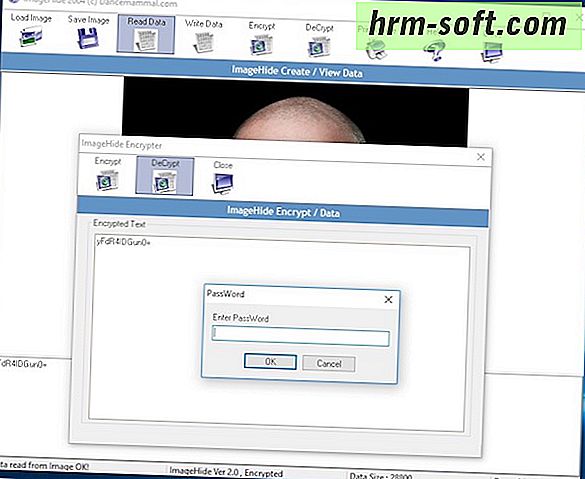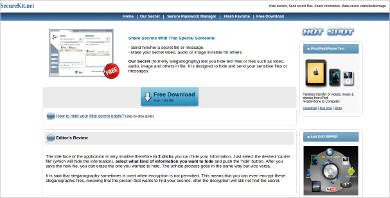

- Best steganography app for mac pdf#
- Best steganography app for mac mac#
In the context, sLen is 2 = 3520 bits, which can legitimately be random per the channel's constraints and property 4. Generate a random octet string salt of length sLen
Best steganography app for mac pdf#
I posit existence of a program that transforms JPEG files into signed PDF with said signature that uses a CSPRNG at step 4 of EMSA-PSS-ENCODE, reading: Here is an example with properties 2 and 4, where original is any JPEG file, and channel is a PDF file with a PAdES digital signature made using 4096-bit RSA per RSASSA-PSS with SHA-512.
Best steganography app for mac mac#
Such system must match whatever reasonable definition of perfect steganography is chosen (if a reusable key is not required, we can even use an information-theoretic MAC and replace encryption by a One-Time-Pad, to become information-theoretically secure regardless of the adversary's computing power). The receiver extracts the bits, perform the decryption/integrity check, concludes there's no payload if the integrity check fails, and otherwise has recovered the payload. We can set these bits of the carrier either to true randomness (for no payload), or to the ciphertext of some authenticated encryption of the payload having the property that ciphertext is indistinguishable from random (which is easy and common). The simplest demonstrably secure steganography system are those where constraints allow to embed a little more uniformly random bits in a carrier than the payload length (after compression). Payload size can range from the text GO to terabytes. Channel and original constraints vary immensely. There are many combinations of constraints depending on use case. The possibility (or not) of making a demonstrably secure steganography system depends heavily on the constraints set: on channel, original, payload size, and extra properties. Note: I've left aside watermarking, even though there is overlap with steganography. There is overlap between channel constraints and constraints in 4.


Property 3 implies 1, and is incompatible with 2.
The process by which an original is transformed into a carrier when no payload is embedded is constrained (e.g. When there's no payload in a carrier, the carrier must exactly match the original. The security goal is met even if the adversary get holds of the original from which the carrier was prepared. The original must be a valid carrier per the channel constraints. It would anyway be trivial to add payload encryption on top of steganography if chosen payload was not assumed. Payload confidentiality follows from security under chosen payload (argument: if the payload was intelligible, comparison with chosen payload would yield a distinguisher). Note: the question's goal "extract the concealed message" could mean that an adversary tries to reduce the size of the carrier while keeping the possibility to recover the payload when latter given the key, but that is not a usual goal, and I won't consider it further. We can assume that the adversary has the choice of payload within size constraints, much like modern cryptography assumes chosen plaintext. The receiver must be extra careful not to leak that info, and that's hard, especially against active adversaries. Original (if any) is data from which the carrier is prepared, with a set of constraints of its own (like, being the output of a consumer digital camera) and prescribed relation with the carrier (typically, a rendition of the carrier for human perception must be perceived as one for the original or at least as a reduced-quality version of the original).Ī steganography system must allow a sender holding a key (perhaps, public) and possibly a payload to construct a carrier and a receiver with a key (same symmetric key, or private key matching public key) to determine if there was a payload in that carrier, and in the affirmative recover the payload.Īn adversary's goal is to distinguish if a carrier carries a payload or not (better than random). Channel is the vehicle by which said carrier is transmitted, and imposes a set of constraints on the carrier (like: being a bytestring of at most such size conforming to JPEG syntax, though perhaps with stricter constraints on padding and comment fields). Carrier is the data in which a payload might be concealed. Payload is digital data one wants to transmit covertly that's the question's "concealed message". I'll use the following largely standard terminology: That's enough to exclude many steganography systems in actual use. Whatever that is, it must obey Kerckhoff's principle: adversaries know all about the system, except non-public keys. "Perfect Steganography" is not well defined.







 0 kommentar(er)
0 kommentar(er)
